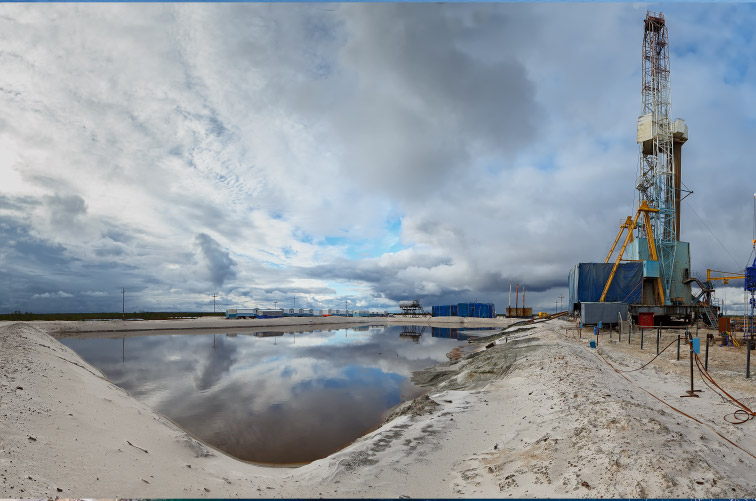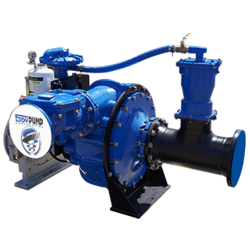Application of EDDY Pump in Shale Oil Extraction



Application of Our Slurry Pumps in Shale Oil Extraction

- Hydraulic Fracturing (Fracking): A slurry transport pump transports the fracking fluid mixture, typically water, sand, and chemicals, into the wellbore at high pressure. The abrasive handling pump’s ability to handle abrasive and viscous slurries ensures the fluid can effectively fracture the shale rock, creating pathways for flowing oil and gas.
- Proppant Transport: After the shale rock is fractured, proppants (such as sand or ceramic beads) are introduced into the fractures to hold them open, allowing oil and gas to flow more freely. The slurry transport pump transports the proppant-laden fluid into the fractures, ensuring proper distribution and placement of the proppants.
- Fluid Recovery and Recirculation: Once the fracturing process is complete, slurry pumps are employed to recover the used fracking fluid and bring it back to the surface. This fluid can be treated, recycled, or disposed of properly. Slurry pumps facilitate the efficient removal and transport of this fluid.
- Drilling Mud Handling: In the drilling phase of shale oil extraction, a high solids pump is utilized to circulate drilling mud – a mixture of water, clay, and additives – to cool and lubricate the drill bit, as well as to carry rock cuttings back to the surface.
- Waste and Water Management: Shale oil extraction generates significant waste, including produced water and drilling mud. A high solids pump is essential for transporting and managing these waste materials, facilitating proper treatment, disposal, or recycling.
- Secondary Recovery Processes: A heavy-duty slurry pump can be used in various secondary recovery techniques, such as waterflooding or enhanced oil recovery (EOR), where fluids are injected into the reservoir to increase oil recovery. These pumps help transport injected fluids into the reservoir to displace oil and push it toward production wells.
- Pipeline and Transfer Operations: Slurry pumps transport oil, water, and other fluids between different stages of the extraction process, such as from the wellhead to storage tanks or from one processing unit to another.
CALL FOR SALES OR SUPPORT
If you need help with Pump Selection, Sales or Engineering Support
Call 619-345-5446

Application of EDDY Pump’s Hydraulic Dredging in Shale Oil Extraction

- Pond and Reservoir Maintenance: Shale oil extraction operations often require the construction of ponds or reservoirs for the storage and management of produced water, drilling fluids, and other process-related fluids. Pond dredging equipment maintains these ponds by removing sediment, sludge, and debris accumulating over time, ensuring proper storage capacity and preventing contamination.
- Water Sourcing: A hydraulic dredger can be employed to extract water from natural sources, such as rivers, lakes, or ponds, for use in various processes related to shale oil extraction. Dredging ensures that the water source remains viable and free from sediment buildup, which could otherwise affect the quality of water used in hydraulic fracturing and other operations.
- Infrastructure Development: Shale oil extraction often involves the construction of infrastructure such as access roads, well pads, and pipelines. Hydraulic dredging can be used to excavate and shape areas for infrastructure development, facilitating construction activities in challenging terrains.
- Sediment Control and Erosion Prevention: The disturbances caused by shale oil extraction operations can lead to soil erosion and sediment runoff, potentially impacting nearby water bodies. Slurry pump dredge can control sediment and prevent erosion by creating sediment retention basins, stabilizing shorelines, and restoring natural water flow patterns.
- Site Remediation: After the completion of shale oil extraction activities, hydraulic dredging can be used for site remediation, removing contaminated sediments, and restoring the site to its original condition. This helps mitigate the environmental impact of the extraction process and ensures compliance with regulatory standards.
- Waterway Maintenance: Shale oil extraction operations may require the use of waterways for the transportation of equipment and materials. Hydraulic dredging can be utilized to maintain navigable water channels, ensuring safe and efficient passage for vessels involved in the extraction process.
- Reclamation and Habitat Restoration: Hydraulic dredging can be part of reclamation efforts to restore disturbed lands to their natural state once shale oil extraction is complete. Dredging can help reshape landscapes, recreate wetlands, and enhance habitats for local flora and fauna.
- Stormwater Management: Hydraulic dredging can assist in managing stormwater runoff by creating retention ponds or basins that capture and temporarily store excess water, reducing the risk of flooding and preventing soil erosion.




